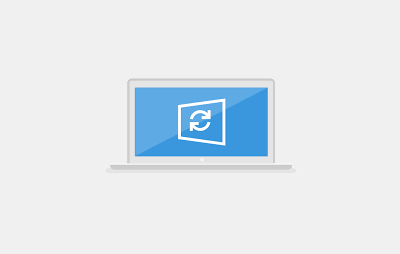This article explains the difference between Upgrade Warnings and upgrade Blocks and tells you how to resolve them if you encounter any while upgrading to Windows 11/10.
Windows Upgrade Warnings vs. Upgrade Blocks

When upgrading to Windows, the Setup performs compatibility checks. If it discovers any issues that may affect the smooth upgrade process, they will be noted in the Compatibility Report.
For your reference, this file gets saved to your desktop as Windows Compatibility Report.htm.
When the compatibility report identifies any issue that will seriously affect the upgrade process and maybe even result in an undesirable outcome, it will give out an Upgrade Warning message.
This indicates that the upgrade can continue, but with some undesirable impact on your configuration.
If the warning relates to some Windows feature, the message would appear as follows:
Upgrading Windows will affect the following features
The features may then be listed. In such a case, it might be a good idea to turn off the specified Windows Features before proceeding further. Cancel the upgrade, open the Control Panel, and Turn Windows features on or off. These Windows features would in all probability not work properly after the upgrade.
If the warning relates to hardware or software compatibility issues, the message would appear as follows:
Upgrading Windows will affect the following devices and programs
In case it relates to a hardware issue, Cancel the upgrade, open Control Panel, and search for “update device drivers”, or go to the device manufacturer’s website to search for updated drivers.
In case it relates to a software program issue, cancel the upgrade and uninstall the program first.
Upgrade Warnings are thus messages which indicate a potentially undesirable outcome, but will not prevent Setup from performing the upgrade.
On the other hand, Upgrade Block messages indicate that the upgrade cannot be performed.
In order to upgrade Windows, you must first resolve the issues identified in the report.
The block message would typically appear as follows:
The following issues are preventing Windows from upgrading.
The issues may be mentioned. In such a case, cancel the upgrade, complete the tasks mentioned in the reports, and then restart the upgrade.
Once you complete the required actions, the upgrade should be able to complete successfully.
Read: Your version of Windows has reached the end of service
What to do if Windows update keeps failing?
There are tons of things to do when Windows fails to install updates on your computer running Windows 11 or Windows 10. You can get started by running the Windows Update Troubleshooter. Following that, you can use the System File Checker, DISM tool, etc. Apart from these, you can also reset Windows Update components to the factory defaults.
What does it mean your version of Windows has reached end of service?
Users get this error or notification on Windows 11 or Windows 10 because their computer has not been updated for a very long time. This is usually due to an insufficient internet connection or minimum hardware requirements. To solve this problem, you might need to upgrade your hardware so that it starts receiving updates again.